Author's note: If you are coming to this piece from a Google search, please note that this is part of our Ethical Jewelry Exposé: Lies, Damn Lies, and Conflict Free Diamonds—a 45,000 word investigation into the dark underbelly of the jewelry industry organized by the metaphor of layered Russian nesting dolls. This section exposes how the Responsible Jewellery Council, the Diamond Development Initiative, and De Beers have conspired to ensure the Death of the Fair Trade Diamond.
—Marc Choyt
NGOs have pointed out for decades that large-scale mining is destructive to the culture and environment of Indigenous people. It has become absolutely critical that large multinationals that have a public profile present strong examples of their concern for small producers.
Inside Chapter 5 we find the Non-government organizations (NGOs) who work with the Responsible Jewellery Council, and thereby lend it legitimacy. (Part A focused on the Council's relationship with the Alliance for Responsible Mining.)
In context to diamonds, the Council has signed a memorandum of understanding with The Diamond Development Initiative (DDI). It function as a focal point, to demonstrate to the world that the Responsible Jewellery Council cares about the small-scale miner.
[For background, particularly in context to De Beers, which controls the supply of the DDI, please read Boycott Conflict Free Diamonds.]
The inclusive path, as illustrated by this Council document, as well as the screenshots of the Council ’s homepage referenced earlier, show how large- and small-scale mining are working together.
These relationships allow the mainstream jewelry trade to loudly, boldly declare just how much they are doing, magnifying the impact their concern for small scale diamonds in continual flow of positive stories.
These new stories deflect the criticism that the jewelry sector does not support small-scale mining, and creates a new forward-facing narrative for the gold from their newly-branded “ethical” large-scale sources.
Let me put it another way, more bluntly:
This is the new "ethical jewelry" strategy of the mainstream jewelry sector’s leaders—benefit a few small-scale miners, scream and shout about it to the world so that you can continue to ignore the rest.
In the previous section, we reviewed how this takes place in context to Responsible Gold. In this section, we review how it takes place with diamonds through the DDI.
The Diamond Development Initiative
The Diamond Development Initiative is the second small-scale mining group that Responsible Jewelry Council signed a memorandum of understanding with in 2011.
Any critique that the jewelry industry is not doing enough for small-scale diamond miners is answered by the Initiative.
The Diamond Development Initiative began in 2005, from a UN meeting with representatives from governments, UK and US aid agencies, and NGOs. A coordinating group was formed, and in 2007, the initiative was passed to a board of directors and advisory group.
In January 2008, the Initiative appointed its first Executive Director, Ian Smillie, author and development consultant who helped form the Kimberley Process.
The Initiative was “created to address the social and economic issues faced by millions of artisanal diamond diggers in Africa and South America who live in poverty outside of the formal economy.”
Smillie, here in 2008, framed out the purpose of the Initiative by asking the question: “Why are people talking about “fair trade” diamonds?” He references FLO (Fairtrade Labelling Organizations International, aka Fairtrade International.)
His words provide a concise summary of the issues at hand:
“The Diamond Development Initiative (DDI), a non-profit organization bringing together civil society, governments and industry, was created to deal directly with this challenge: to test and apply development solutions to development problems. Instead of treating diggers as criminals, the idea is to find ways of bringing them into the formal economy where they can have a long-term stake in a legal system and real benefits.”
To be clear, the challenges of the Initiative in creating a fair trade diamond are formidable, as can be explored in this Fair Trade Diamond Feasibility Study, which was also completed in 2008. This study was conducted by TransFair USA (now Fair Trade USA) and funded by a $100,000 grant from The Tiffany & Co. Foundation.
The study recognized that, “the business case for Fair Trade Certified (FTC) diamonds is generally positive; it is clear from the marketing study that there is strong interest for buying and selling FTC diamonds amongst mission-based retailers, who anticipate growing customer awareness and demand” (p. 3).
The Diamond Development Initiative has focused on Sierra Leone, one of the countries most impacted by diamond-funded war. With major industry backing, the initiative has had resources necessary to accomplish its goal.
Yet…a redemptive diamond narrative focused on the plight of small-scale diamond diggers, whose communities had been impacted by wars funded by diamonds, would be highly disruptive to the “a diamond is forever” narrative.
Thus, the years passed by…and no FTC diamond ever came to market.
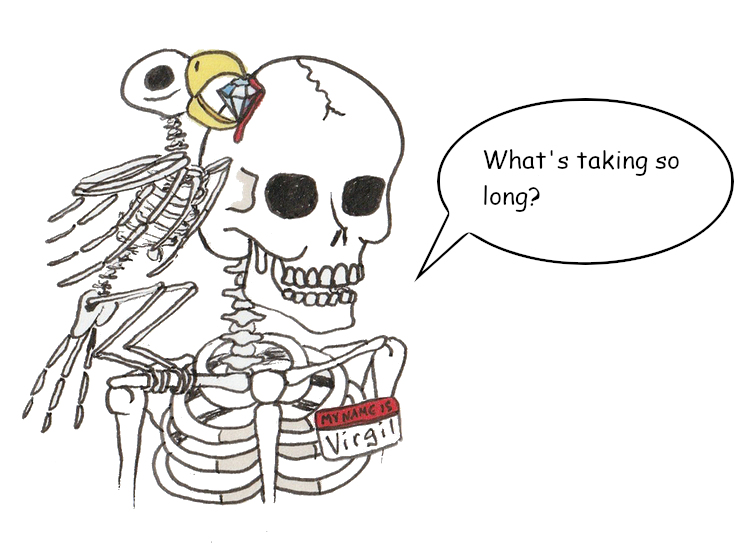
In 2016, the Diamond Development Initiative introduced the Maendeleo Diamond Standards, which outlines on-the-ground practices necessary to bring ethically-sourced diamonds to market.
The 2018 version of these standards states the objective to create a process “that promotes sustainable development and responsible mining practices at artisanal and small-scale diamond mines. This improves the lives of the miners who dig artisanal diamonds and benefits the broader communities to which they belong.”
It was hard not to conclude that, after ten years without a diamond brought to market, it was merely some decoy jewelry trade leaders could point to and say, “We care about the small-scale diamond sector. Just look at the Diamond Development Initiative.”
The Diamond Development Initiative in 2018
To understand the agenda of the Diamond Development Initiative, we need to look at the Diamond Development board. Ian Smillie is still chair. Among others, membership includes Matt Runci, former Chair of Governance for the Responsible Jewellery Council and CEO of Jewelers of America. Also, there’s John Hall, CEO of Corporate Reputation Strategy and former GM of External Relations for Rio Tinto.
The question then becomes: under what conditions would the Responsible Jewellery Council (and its member, De Beers) allow a viable diamond from ASM mines to reach the market?
Obviously, two critical elements must be in place:
First, they must have control of the market. Control of the market means control of the number of diamonds and how they are distributed through jewelers to the public.
Second, and perhaps even more important, is to control the narrative story. Ethical sourcing in the diamond sector is an area of great vulnerability to diamond marketing. A fair trade diamond, as Smillie suggested when he referenced FLO back in his 2008 statement, would be disruptive to the market.
Market control has historically been De Beers’ specialty. You’d better believe that if there was going to be a fair trade diamond, particularly out of Africa—their home turf—they would have their hand in it.
Now, let’s explore the Diamond Development Initiative/Responsible Jewellery Council Alliance
We can start with the Initiative’s pro-Kimberley Process agenda…here’s a Tweet. This one took place when IMPACT pulled out of the Kimberly Process:
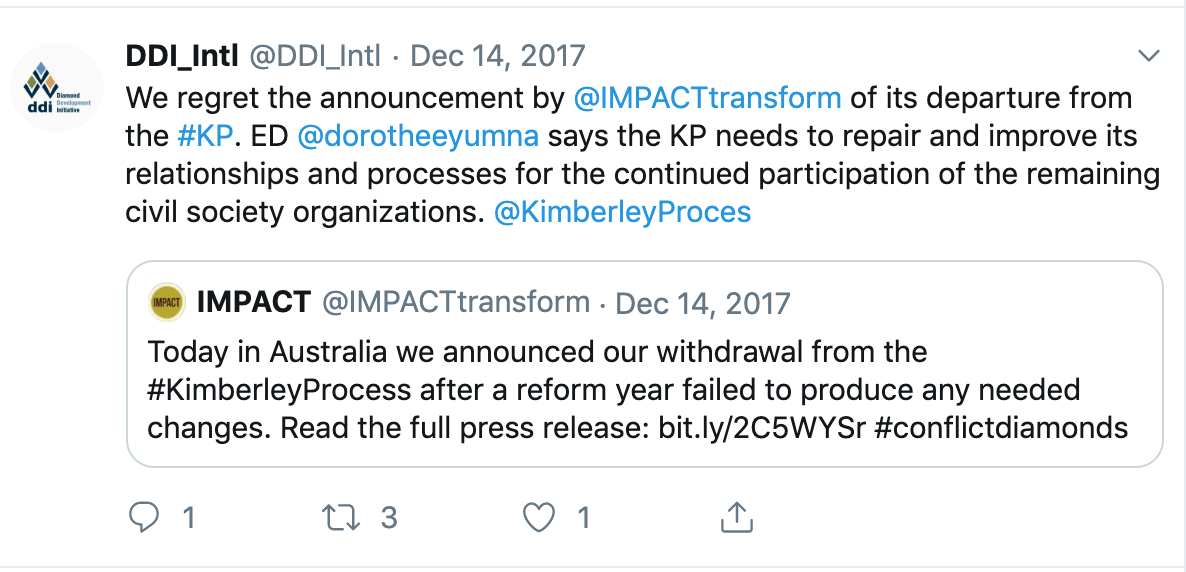
The Diamond Development Initiative, as an advocacy group for small-scale diamond miners, does not acknowledge the Kimberley Process’s incurable faults that led to the only legitimate non-governmental organization left on its council left to abandon it, but instead “regret[s]” the announcement.
IMPACT was one of the key stake holders in the Kimberley Process (when IMPACT was then called Partnership Africa Canada)—through the leadership, at that time, of Ian Smillie.
Here is its statement from its current ED Joanne Levert upon leaving the Kimberley Process:
“The Kimberley Process—and its Certificate—has lost its legitimacy. The internal controls that governments conform to do not provide the evidence of traceability and due diligence needed to ensure a clean, conflict-free, and legal diamond supply chain. Consumers have been given a false confidence about where their diamonds come from. This stops now.”
IMPACT waited seven years to conclude what Global Witness, another key framer of the Kimberley Process, understood in 2011, when they resigned over the Kimberley Process’ certification of blood diamonds from Zimbabwe.
Global Witness in context to Zimbabwe is explored in another section, but for now, note Global Witness’ 2011 Press Release: “The Kimberley Process’s refusal to evolve and address the clear links between diamonds, violence and tyranny has rendered it increasingly outdated.”
Yet, the January 2018 tweet shows that Ian Smillie, one of the most important and respected global champions of small-scale diamond miners, now, through the Tweet of his organization, endorses the Kimberley Process.
But now, look at this retweet:
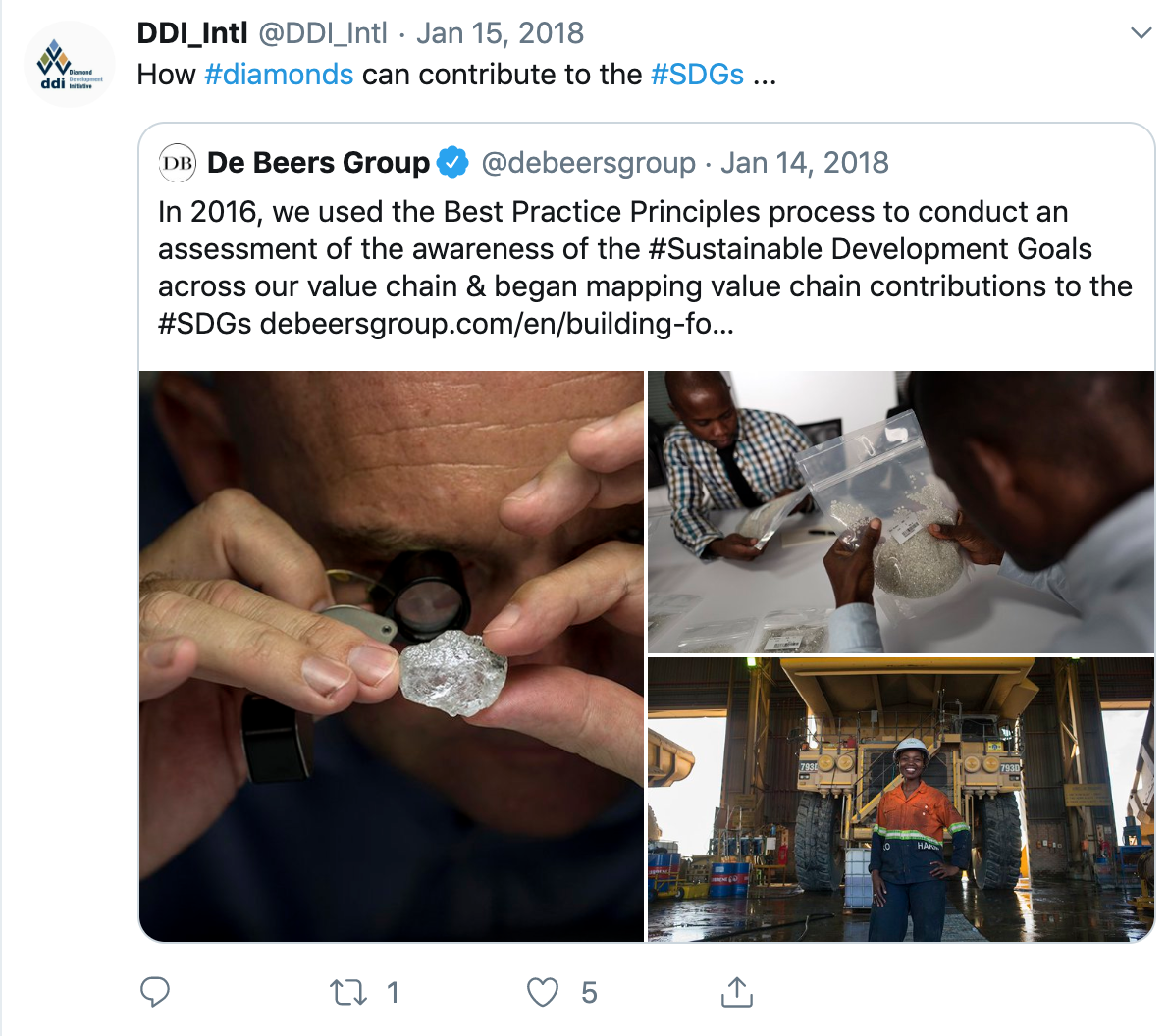
It shows the Diamond Development Initiative’s connection to De Beers. I did not fully understand why the Initiative was retweeting De Beers until this announcement went up from De Beers.
The Diamond Development Initiative’s partnership with De Beers allows De Beers to leap into the artisanal and small-scale mining (ASM) diamond market through this joint GemFair initiative.
The Death of the Fair Trade Diamond
The diamond from the Diamond Development Initiative will now will find its market through De Beers.
As stated in the GemFair press release, “Any approved purchases would be sold via De Beers’ industry-leading Auction Sales channel.”
Part of this initiative is to equip small-scale miners with blockchain equipment that would allow them to mark the location of where a diamond is found.
(From a business point of view, offering this equipment for free is considerably cheaper and carries far less reputational risk for De Beers than hiring paramilitary groups, as they did between 1980 and 2000.)
If this initiative were put into place by Fairtrade International, I would be cheering. But it was not, and I am not. Here’s why:
The Initiative has spent massive resources over the past thirteen years to build capacity in their small-scale mining communities. This is a valuable kind of collateral, and it previously belonged to the broader community of people who supported it. Now, with GemFair, it is functioning as a nonprofit arm of De Beers.
Though what is happening in Sierra Leone is an excellent example of what can be done for small-scale diamond diggers, it is entirely contained. Whether De Beers is going to brand this diamond separately or simply fold it into their supply chain has yet to be determined. It’s a perfect showcase for the diamond sector to show the world that it cares.
The spin coming from De Beers is that if this initiative succeeds, there’s the possibility it can expand into other countries. Really? The Sierra Leone project took over ten years. Honestly, I would find it ludicrous to believe that the project will expend to other areas. The million other small-scale diamond diggers around the world living in poverty—as well as the larger consumer market genuinely craving a fair trade diamond, will not get what they want.
Regardless, De Beers has absolute control of the market narrative, and it is a certainty that this new diamond will have no impact on their current branding.
In essence, over the past ten years, the Diamond Development Initiative has gone from a fair trade model to an initiative in which (at this point) De Beer’s controls distribution.
Suppose all Fairtrade Gold was purchased by De Beers and sold exclusively through De Beers. Would you believe it? In fact, if the industry was really interested in a fair trade diamond, they could have supported Fairtrade International in creating a program like Fairtrade Gold.
The problems of creating a viable small-scale diamond program are immensely difficult, from building trust to finding a way to export, given the control of the Lebanese mafia. Yet it is hard to believe that — given the right resources, and the full support of the diamond trade — it wouldn't have succeeded by now.
The irony is thick. With the Diamond Development Initiative, De Beers initiates what could lead to a monopoly on the new frontier of ethical diamonds: the traceable small-scale sector, the very sector that that they controlled during the ‘80s when millions were being killed.
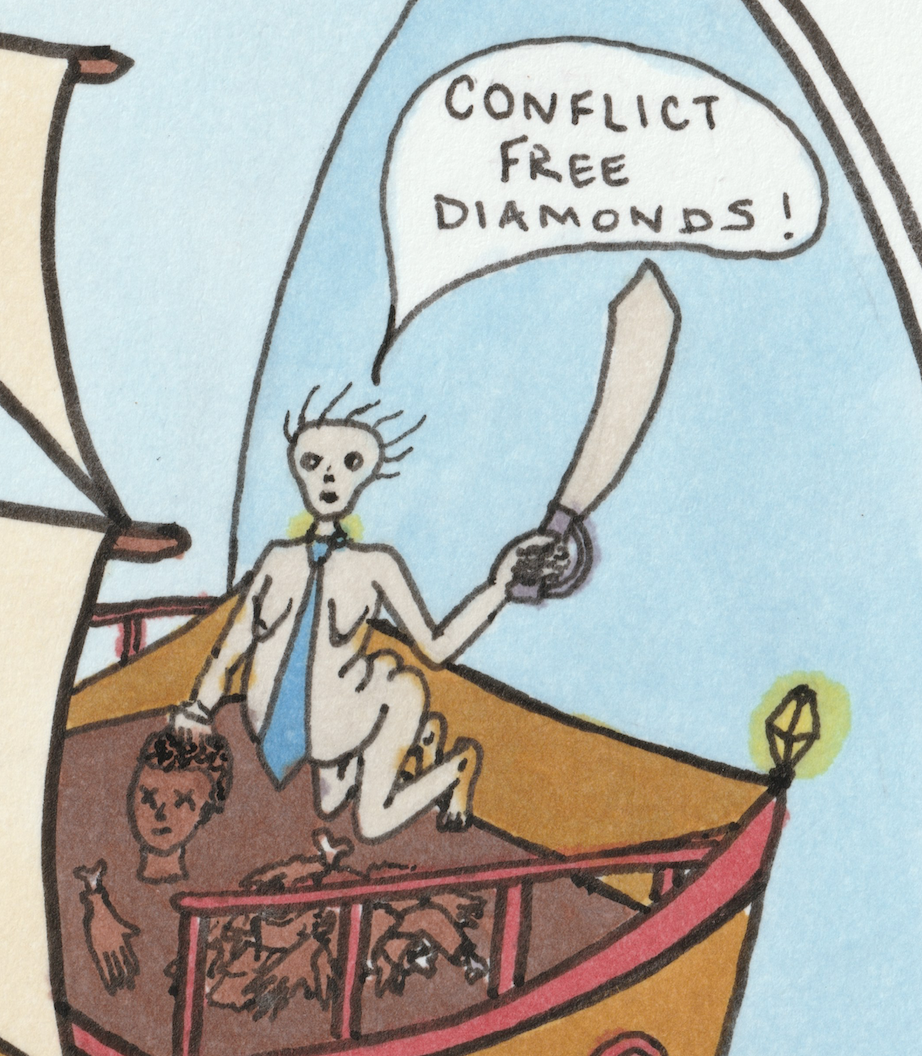
De Beers is, as this recent trade magazine article points out, implemented a strategy “in an effort to monopolize the market in diamonds that are ‘ethical.'”
Of course, Brilliant Earth, the company that dominates the American ethical jewelry space, speaking directly to the ethical millennial consumer, amplifies and legitimizes the Diamond Development Initiative’s work—already laying the ground for the new “Vision For The Future: Fair Trade Diamonds.”
Here’s a screenshot from their website:
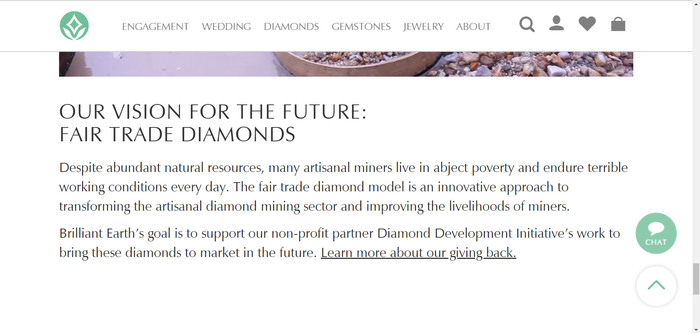
Screenshot from summer 2018.
In my opinion, considering the historical context, giving De Beers control of the Diamond Development Initiative’s new, as Brilliant Earth calls, “fair trade diamonds” is like putting David Duke in control of the Southern Poverty Law Center.
[See my piece on Brilliant Earth, the Eighth Russian Doll of this Exposé.]
But to understand how this event is the end of a coherent strategy that has been taking place for years, we must open the next Russian doll and explore the diamond babble.
Continue on to the Sixth Russian Doll: Kimberley Process' Damn Lies
Return to the Fifth Russian Doll Part A: "Responsible Gold" from the RJC
Return to the Landing Page

**All writing and images are open source, under Creative Commons 3.0. Any reproduction of this material must back link to the landing page, here. For high resolution images for publication, contact us at expose(AT)reflectivejewelry.com.**